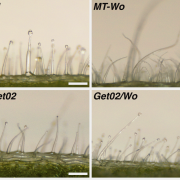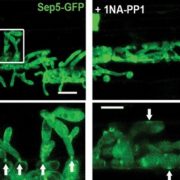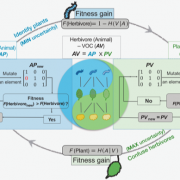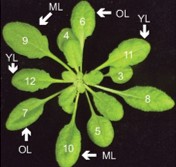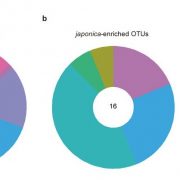Singlet Oxygen and Osmotic Stress
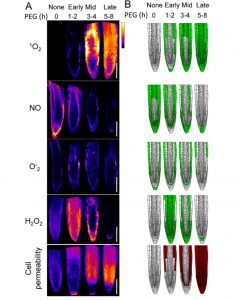 Some experimental systems aimed at understanding the effects of drought on plants have incorporated cell-impermeable high molecular weight polyethylene glycol (PEG) to mimic the osmotic component of drought stress. The use of PEG showed that drought stress response could be separated into components of high osmotic pressure effects and of high salt toxicity effects, with each exhibiting distinct transcriptome profiles. Chen and Fluhr (10.1104/pp.18.00634) have quantified the effects of exposure to polyethylene glycol on the growth of the main and lateral roots of Arabidopsis seedlings. The effects on root growth were highly correlated with the appearance of singlet oxygen, as visualized using the singlet oxygen-specific probe Singlet Oxygen Sensor Green. The production of singlet oxygen was followed by cell death, as indicated by the intracellular accumulation of propidium iodide due to the loss of membrane integrity. Cell death began in the epidermal region of the root tip and spread to meristematic sections. Gene expression changes specific to the presence of singlet oxygen were observed in parallel. The accumulation of other reactive oxygen species, namely hydrogen, nitric oxide, and superoxide, did not correlate with cell death. In addition, both the singlet oxygen scavenger histidine and the lipoxygenase inhibitor salicylhydroxamic acid specifically inhibited singlet oxygen accumulation and cell death. The latter result suggests a light-independent, type-I source for singlet oxygen accumulation. Other ROS were not affected by such treatments. The interaction of serpin, a protease inhibitor, with its cognate vacuolar proteases, was used as a model to assess the possibility of vacuolar-type cell death resulting from osmotic stress. The authors show that osmotic stress induces the accumulation of complexes between the cytoplasmic serpin AtSERPIN1 and its cognate vacuolar proteases, indicating that vacuolar integrity becomes compromised during osmotic stress. These findings imply that singlet oxygen plays an essential role in mediating the responses of plant root systems to osmotic stress.
Some experimental systems aimed at understanding the effects of drought on plants have incorporated cell-impermeable high molecular weight polyethylene glycol (PEG) to mimic the osmotic component of drought stress. The use of PEG showed that drought stress response could be separated into components of high osmotic pressure effects and of high salt toxicity effects, with each exhibiting distinct transcriptome profiles. Chen and Fluhr (10.1104/pp.18.00634) have quantified the effects of exposure to polyethylene glycol on the growth of the main and lateral roots of Arabidopsis seedlings. The effects on root growth were highly correlated with the appearance of singlet oxygen, as visualized using the singlet oxygen-specific probe Singlet Oxygen Sensor Green. The production of singlet oxygen was followed by cell death, as indicated by the intracellular accumulation of propidium iodide due to the loss of membrane integrity. Cell death began in the epidermal region of the root tip and spread to meristematic sections. Gene expression changes specific to the presence of singlet oxygen were observed in parallel. The accumulation of other reactive oxygen species, namely hydrogen, nitric oxide, and superoxide, did not correlate with cell death. In addition, both the singlet oxygen scavenger histidine and the lipoxygenase inhibitor salicylhydroxamic acid specifically inhibited singlet oxygen accumulation and cell death. The latter result suggests a light-independent, type-I source for singlet oxygen accumulation. Other ROS were not affected by such treatments. The interaction of serpin, a protease inhibitor, with its cognate vacuolar proteases, was used as a model to assess the possibility of vacuolar-type cell death resulting from osmotic stress. The authors show that osmotic stress induces the accumulation of complexes between the cytoplasmic serpin AtSERPIN1 and its cognate vacuolar proteases, indicating that vacuolar integrity becomes compromised during osmotic stress. These findings imply that singlet oxygen plays an essential role in mediating the responses of plant root systems to osmotic stress.


